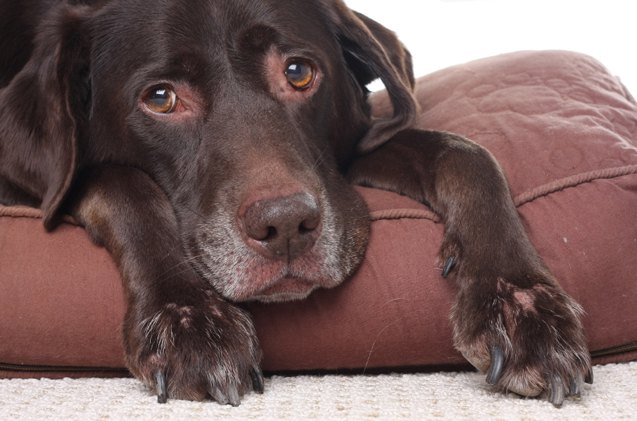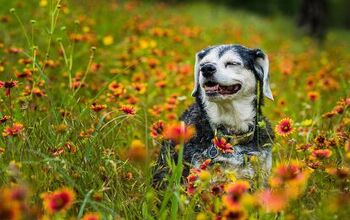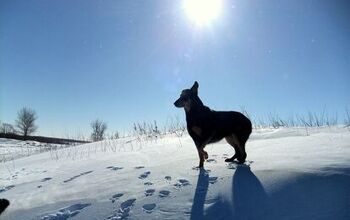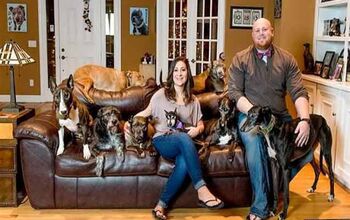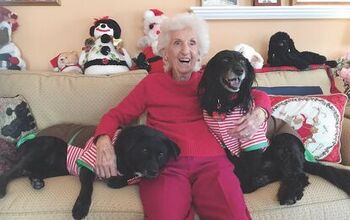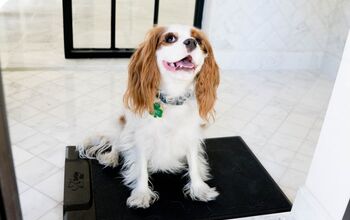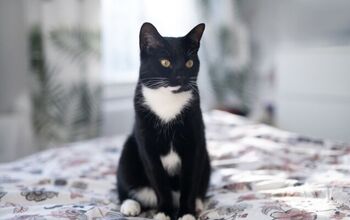Tips On Making Your Home Comfortable For Your Senior Dog

He’s been by your side for a long time. Even though he’s not a playful puppy anymore, he’s still your loyal best friend. Depending on the breed, the senior years of a canine’s life can start anywhere from seven to 10 years of age. These are your dog’s golden years. You’ll notice that he’s moving slower; that his muzzle is starting to turn gray; that he’s more content to sleep on the couch than join you for a game of fetch. These changes may happen so gradually you may not even notice. But time sneaks up on us all… even our dogs. And you want to make your dog’s time as a senior is as comfortable as possible.
There are things you can do around your home to make life much more comfortable for your senior dog. Here are just a few things you can do:
Elevated dog bowls: Small things make a big difference. Bending over to eat or drink can put a strain on joints, especially for larger dogs. Buying elevated dog bowls for food and water can take a bit of the stain off of your dog’s neck and back, making meal time more comfortable. Many elevated bowls on the market are adjustable, allowing you to set the bowl at the perfect height for your dog.
Hardwood floors: Hardwood floors look nice, but they can be hard for a senior dog to walk on, especially if they have arthritis. Slips and falls will be inevitable, which can cause injuries. If carpeting is not an option, put down large area rugs to making walking around your home easier on him. Focus on placing rugs along regular travel routes in the home such as hallways leading to and from the bedroom. You should also consider putting rugs directly in front of any doorways that your dog regularly uses to go outside. If your dog comes in with wet or snow-covered paws, this will help prevent your dog from slipping.
Orthopedic dog beds: Made for maximum support, these beds cushion joints and bones and are ideal for arthritic dogs. Consider one that’s heated, comes with a bed warmer or a heated blanket (don’t turn them up too high – you don’t want to burn delicate skin). The combination of a supportive bed and heat will be therapeutic for your senior dog. Elevated beds are also a great choice as they make it easier for older dogs to get in and out of bed as they don’t have to get down to the ground.
Indoor potty station: Incontinence can be an issue for senior dogs. If mobility is an issue and outdoor bathroom breaks are out of the question, there are many indoor products available to you. You can use newspapers and potty pads, but there are more sophisticated systems on the market, such as the Pet Loo and Piddle Place. They let your dog do his business inside while leaving your home smelling fresh and making clean up easy for you.
Ramps: Your senior dog will need some extra help getting up and down the stairs, into the car, onto the couch or even to join you in bed at night. You can make your own ramp ( Kol’s Notes has a great how-to guide) or buy one. They come in a variety of sizes and prices, but can be well worth the price… especially if you have a larger dog you can’t lift on your own.
Stick to One Floor (or Carry): If possible, keep everything that your dog will need on one floor of your house to remove the need for stairs. If you do have a two-story home with important rooms on each floor, such as an upstairs bedroom, be prepared to carry your dog up the stairs if he can no longer climb them comfortably. For larger dogs that are hard or impossible to carry, there are lifting harnesses like those offered by Help ‘Em Up Harness that help your dog move comfortably without fully lifting him.
Tripping Hazards: As your dog gets older, he may not be as steady on his feet. He may also be experiencing a decline in his vision, hearing, or his overall awareness of his surroundings. If there are any tripping hazards in your home, this could put your dog at risk. Keep your floor clear of clutter. Take note of areas in your home that may be higher risk such as uneven floors or stairways and block them off if necessary.
Sharp Corners: Along the same line as tripping hazards, sharp corners may cause injuries if your dog bumps into them or trips and falls. Check the corners of any furniture in the areas that your dog has access to. If you notice that there are exposed sharp corners, consider using protective covers or even a piece of foam to put a buffer in place.
Avoid Major Redecorating: Making subtle changes in your home such as new blinds won’t cause a problem, however, if you’re redecorating or reorganizing a room that your dog frequents, you could be making it more difficult for him to navigate his space. As your dog gets older, he will rely less upon seeing his surroundings and more on his memory of where different objects are. If possible, avoid moving furniture and other large objects. Familiarity will be a source of comfort for your dog.
Temperature: As your dog gets older, he is going to be more sensitive to temperature changes. While you can’t control the temperatures outside, you can make your home more comfortable. Don’t hold off as long on turning on your air conditioning in the summer or your heat in the winter. This will help you keep your home at a consistent and comfortable temperature all year long.
Do you have any other tips to add to this list? If so, please add them to the comment section below for the rest of the community.

Amy Tokic, Editor of PetGuide.com, is a passionate animal lover and proud pet parent of Oscar, a Shih Tzu/Chihuahua cross, and Zed, a Japanese Chin. Her love of animals began in kindergarten, when she brought her stuffed dog Snoopy into class with her every day. Now, she writes about her adventures in pet ownership and tirelessly researches products, news and health related issues she can share with other animal enthusiasts. In her free time, Amy loves perusing used book and record stores, obsessing over the latest pet products available and chasing squirrels with wild abandon (a habit attributed to spending too much time with her pooches).
More by Amy Tokic



